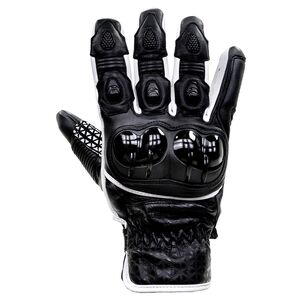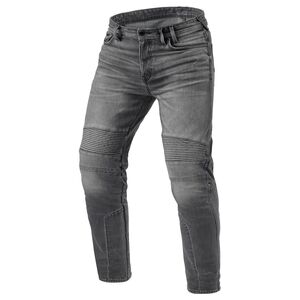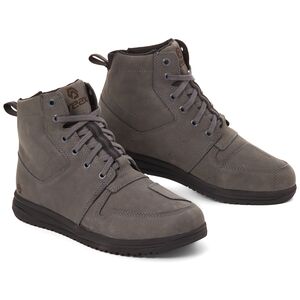We open on a lone motorcyclist perched on a hilltop. He surveys the darkened landscape. The glittering skyline of Benidorm, Spain, stretches before him. A frenetic violin plays in the background before the boom of a kick drum sets a montage in motion.
Jump to the rider barreling down a brightly lit tunnel. The wail of an inline triple echoes off the walls. Smash cut to daytime. Our protagonist winds along twisty canyon roads. Cut to an underground garage, where the real main character is ready for its close-up. Pull back to reveal the all-new Daytona 660.
Pull out further to reveal all that action unfolding on a flat-screen TV in a hotel conference room, where a group of travel-weary, bleary-eyed moto journalists let the manic montage wash over them.
This is how Triumph presents the 2025 Daytona 660. It’s sporty, cutting through corners as quickly as Triumph editors cut through shots. It’s urban, backed by an EDM-meets-trap soundtrack. What it isn’t, judging by the lack of raceway footage in the promo video, is a sharply focused track weapon. The model’s street-only press launch further supports that thesis. The lack of a track ride is only notable because of the Daytona badge the sport bike bears.
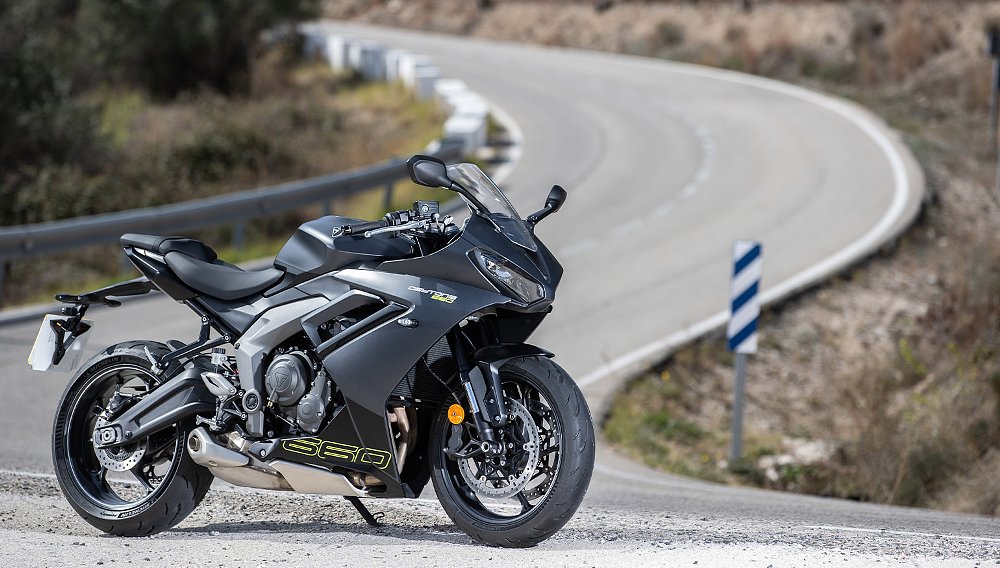
You hear it all the time: Hollywood only makes sequels and remakes. But, they aren’t alone. The motorcycle industry is just as preoccupied with repackaging the past — and Hinckley’s all-new Daytona 660 is proof positive. At the same time, no Hollywood studio would revamp a legacy series without understanding its history first. And with that, let's cue the flashback scene.
Exposition
Triumph first used the Daytona name in 1967 to 1974, when the T100R Daytona capitalized on Buddy Elmore’s victory at the 1966 Daytona 200. The nameplate didn’t return until John Bloor revived the company in the 1990s. Throughout the decade, the Daytona family included the 750, 1000, 900, and 1200 variants as well as the T595 and 955i iterations.
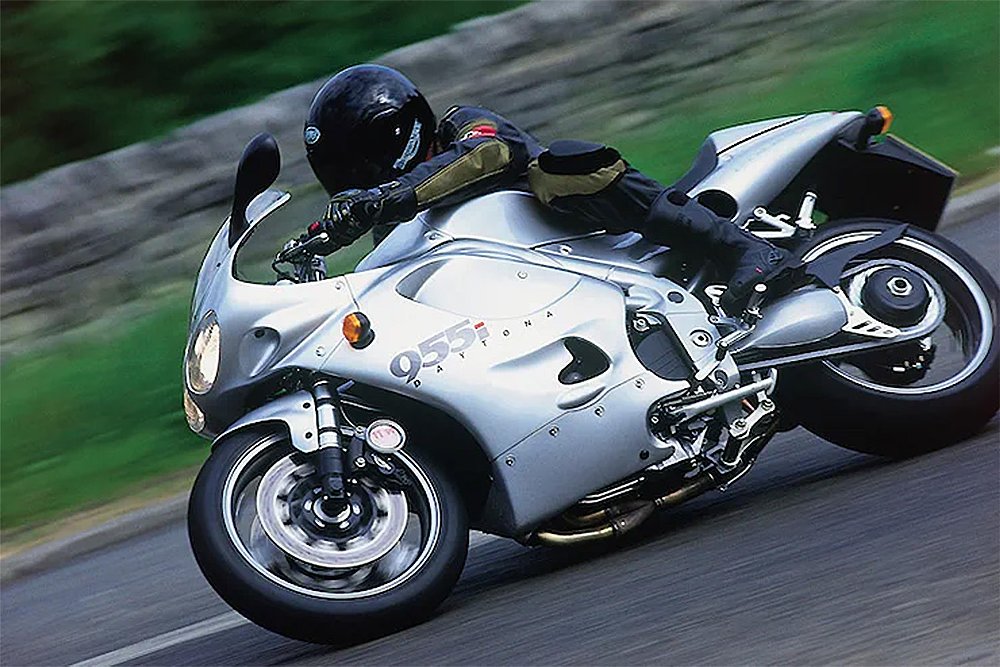
In the new millennium, the Daytona 600, and later the Daytona 650, carried Triumph’s sport bike banner. By 2006, the iconic Daytona 675 arrived. The 675 was a Daytona that was finally competitive in the hotly contested supersport category, offering a three-cylinder alternative to the ubiquitous inline fours in the class. That's the bike that most associate with the Daytona name today. The R-spec trim appeared in 2011, but by that point, the lineup was living on borrowed time.
Just as the popularity of the supersport class started waning, Triumph discontinued the model in 2017. After decades on the market and the raceway, Triumph put the Daytona back on the shelf. But, like a superhero franchise, it wasn’t gone for long.
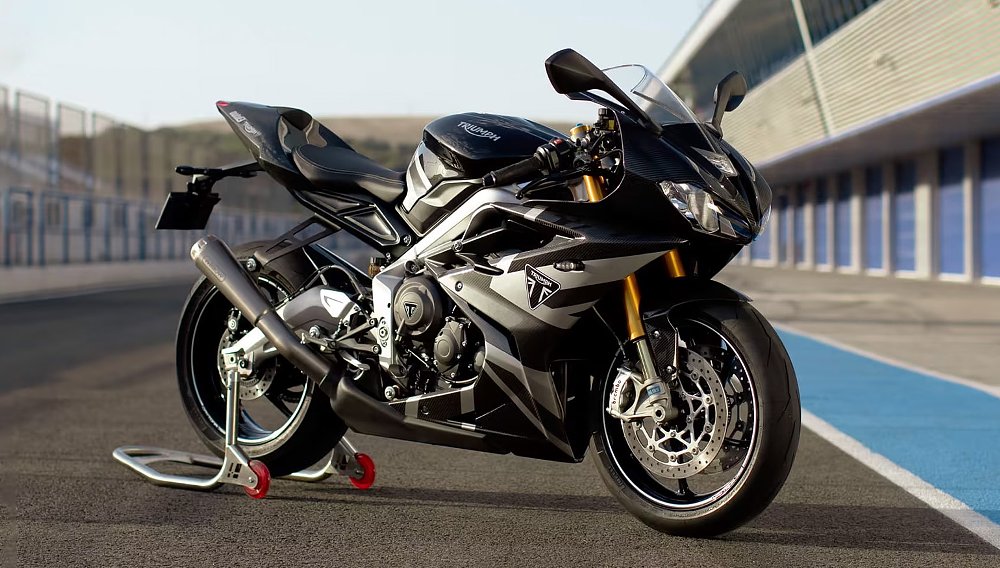
Reimagined for a new generation of sport bike riders, the Daytona now returns as a member of the firm’s 660 range. What’s that mean in plain English? As stated by Triumph representatives, it means the newest Daytona delivers “a ride that’s dynamic, but also one that’s genuinely comfortable.”
That’s a far cry from the 675’s hard-charging performance and aggressive ergos. Simply put, a race replica, the 660 is not. Released as an early 2025 model, Triumph recasts the Daytona as a street-friendly sport bike, in the same way other manufacturers have moved from high-strung inline fours to friendlier parallel twins in the middleweight sport bike category. All of which begs the question: will the ghost of the 675 haunt the 660’s turn as Triumph’s marquee sport bike? Is it a star in the making or a flop in waiting? Our group of multi-national journos scurried to the arid hills of southeast Spain to find out.
Rising action
Triumph bases the Daytona’s powerplant on the 660 cc inline triple found in the Trident 660 and Tiger 660 Sport, but significant changes spice up the engine in sport bike form. The cylinder heads tout larger exhaust valves and higher-lift cams. A low-friction treatment coats the pistons and a new crankshaft increases gear width. To force more air and fuel into the combustion chambers, Triumph employs a larger airbox and three throttle bodies.
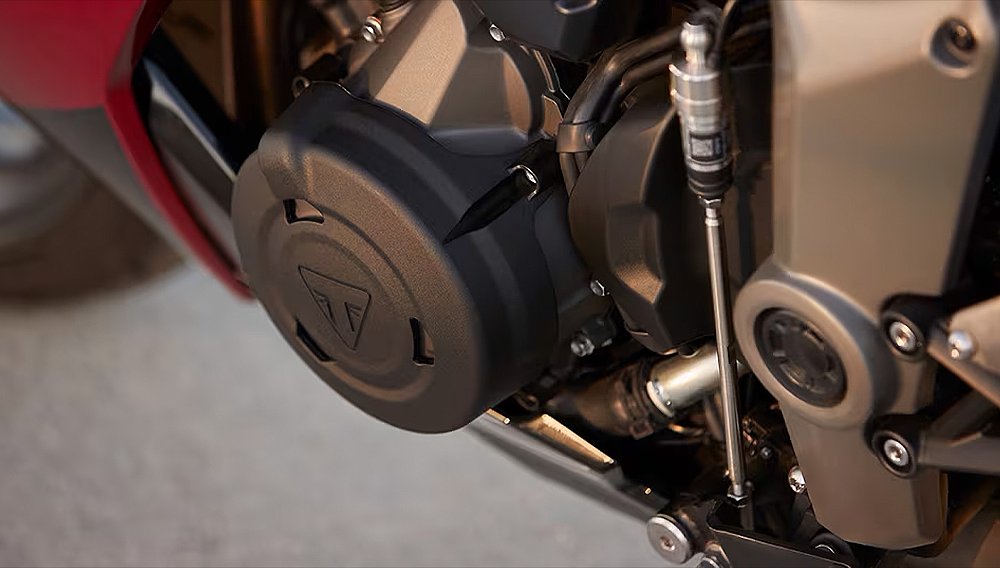
The outcome is 94 horsepower (at 11,250 rpm) and 50.9 foot-pounds of torque (at 8,250 rpm), per Triumph’s calculations. Compared to the Daytona’s 660 stablemates, that accounts for a 17% increase in power and a 9% torque boost. What matters most is how the engine makes that power. For starters, the three-pot mill spins up to 12,650 rpm. Good luck finding a twin with a redline to match.
Triumph also claims the triple generates 80% of its torque between 3,125 rpm and 11,750 rpm. That may be the case on the OEM's charts and graphs, but out in the field, the inline triple plays more like a double feature. Below 8,000 rpm, it’s easy-going and accessible, courting audiences with its predictable nature. Crack the throttle and its linear powerband whisks you away; more magic carpet than classic crotch rocket.

It’s a different story beyond 8,000 rpm, where your arrival is greeted by a surge in both torque and power. It’s a micro-dose of adrenaline, adding a burst to the 660’s otherwise even-keeled march. As the revs climb, so do the vibrations. Commuters and joy riders are unlikely to explore the upper reaches of the Daytona’s register for that reason. The opposite is true for those hoping to fully exploit the sport bike’s performance potential. Pro tip: Just keep the thing screaming above 8,000 rpm.
Once the revs fall below 6,000, the 660’s acceleration and throttle pickup are far less responsive. In more instances than one, I approached a turn in third gear only to discover a decreasing radius curve around the corner. With the tach needle under 4,000 rpm, optimal drive required a heavy throttle hand and a two-alligator count. Chucking in a downshift prior to such corners remedied the issue, with the Daytona singing its triple-cylinder tune on the way to the next set of curves.
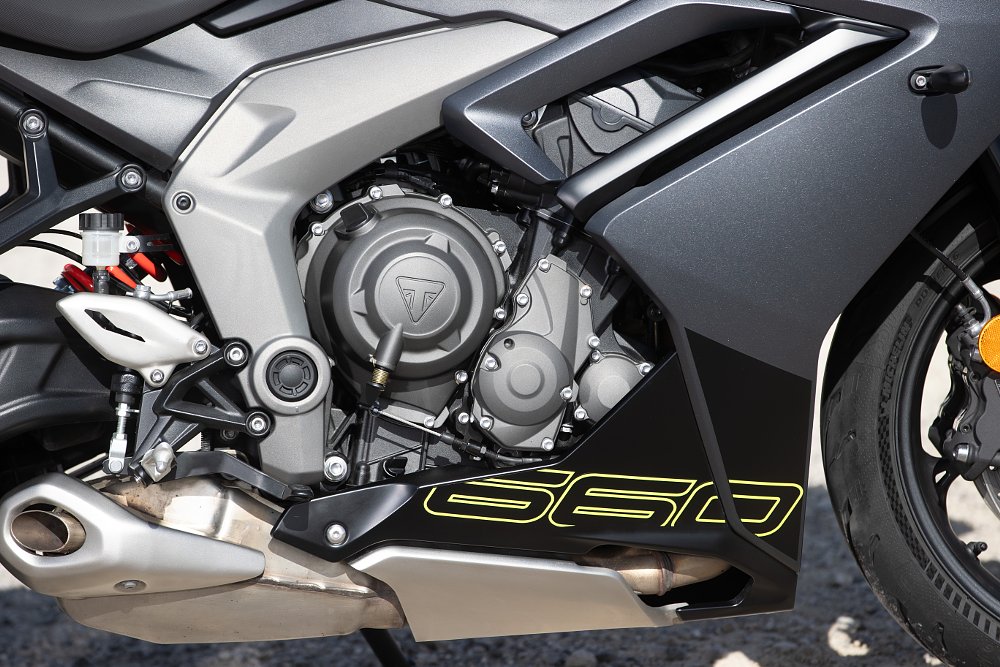
It’s the 660’s ability to chill and thrill that makes it a rewarding companion. It can scamper through city traffic at 3,000 rpm, hold 70 mph at 6,000 rpm (in sixth gear) on the highway, or scream down the straight at 12,000 rpm. That versatility makes the engine a clear standout. Though, its chassis isn’t all that far behind.
Twists and turns
The model’s triple throttle body setup forced Triumph engineers to reimagine the 660 family’s tubular steel perimeter frame. The reworked layout also bestowed sportier geometry on the Daytona. Win/win. Showa’s separate-function big-piston fork (SFF-BP) and rear monoshock suspend the package, while Triumph-branded J.Juan four-piston calipers and 310 mm discs up front provide much of the stopping power.

Those robust components prepare the Daytona for road duties, but they also push it to a 443-pound curb weight (claimed). If that sounds like a hefty load, especially for a sub-100-horsepower sport bike, you’re not alone. But in true Triumph fashion, the Daytona’s handling belies the number on the scale. Tip-in is swift and accurate, with the chassis holding its line from entry to apex. Introducing throttle may introduce understeer, but that’s to be expected from a budget-conscious rear shock.
At the other end of the spectrum, I’m happy to report that the Showa fork doesn’t dive through its stroke on the brakes. Instead, it eats up the available travel at a steady rate, even if it’s close to bottoming in heavy braking zones. Those attributes proved sufficient in the twists and turns shaping the mountain roads just outside of Benidorm and Alicante. Through a seemingly endless series of esses, the Daytona flopped from side to side with utter ease, allowing the rider to push it around underneath them. Still, the serpentine roads didn’t make things easy on the 660.
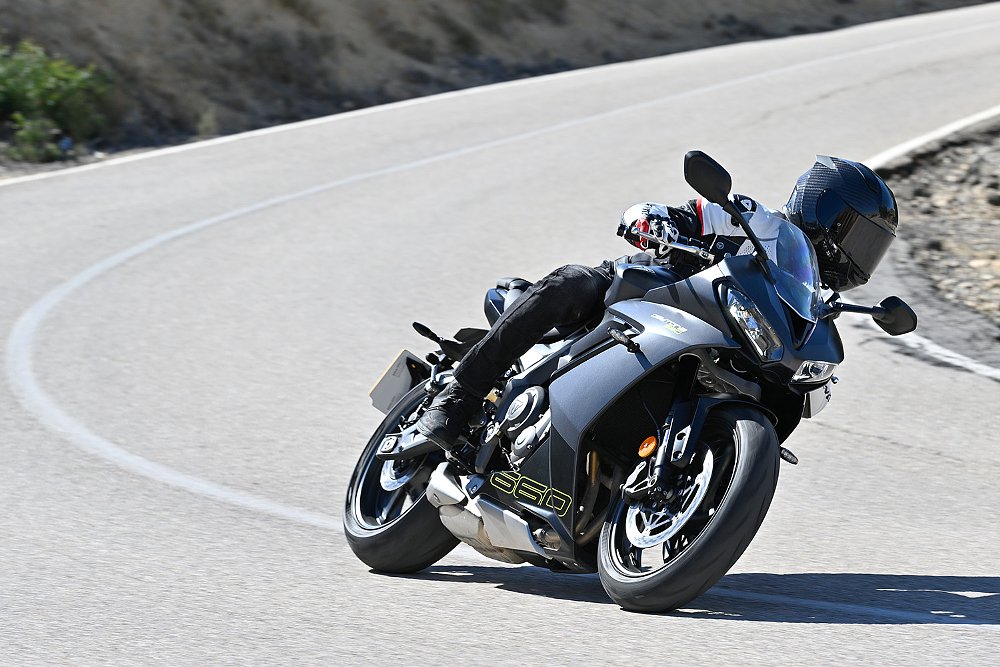
The region’s hilly landscape meant several blind crests throughout our route. As luck would have it, tight hairpins waited at the bottom of many of those steep drops, challenging the suspension to settle just before the bike cranks over on its side. Those instances advocated for some rebound and compression adjustability at both ends that isn't there, but ultimately, the Daytona completed the corner every time. Competent braking also aided in those maneuvers.
Axial master cylinders and radially mounted front calipers are common in this class. What sets the Daytona apart are its steel-braided lines. Braking feel isn’t the 660’s strong suit, as the lever pull isn’t proportional to the system’s stopping rate. What the braided lines bring to the table is consistent performance. A quality put on full display by the heavy and incessant braking required to negotiate the turns encountered throughout the day.
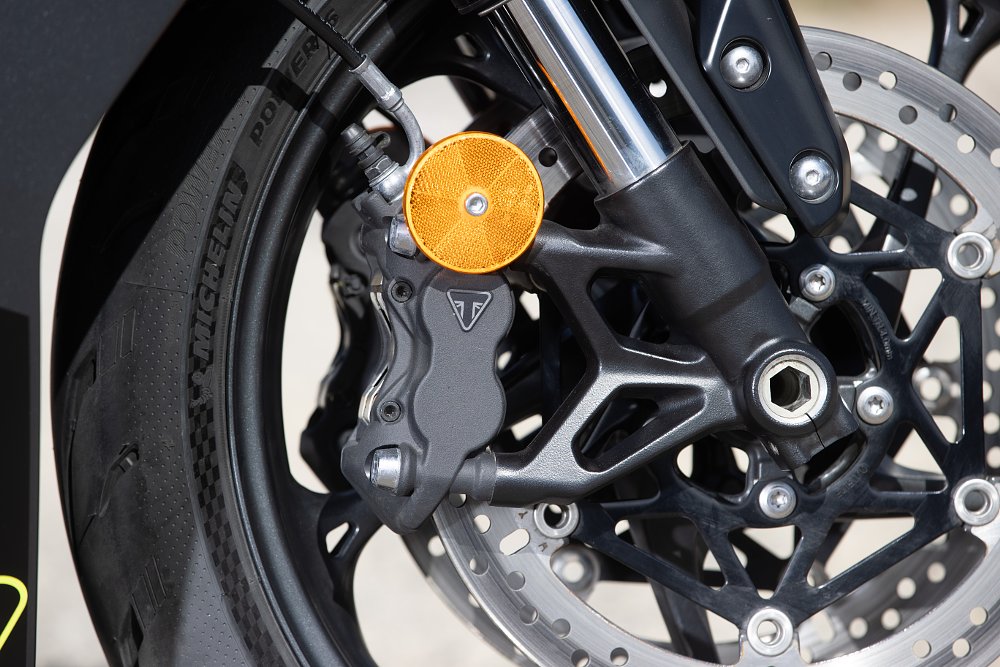
While budget in nature, the suspension and brakes hold up to much of the model's intended uses. I can’t say the same for the Michelin Power 6 tires spooned onto the Daytona’s 17-wheels. On five separate occasions (I counted), the rear tire slipped when I initiated the throttle at lean. That’s understandable at higher lean angles, but the rear also lit up once while exiting a roundabout. Fortunately, traction control was there to preserve the tire’s purchase and my control over my bodily functions.
The hero’s journey
Comfort is a major selling point for sport bikes of this ilk. There’s no sense in folding yourself into the jockey position just to abide by posted speed limits. Committing to less-committed ergonomics isn’t as effortless as it seems, though. Triumph went to great lengths to find the balance between sporty and sensible.
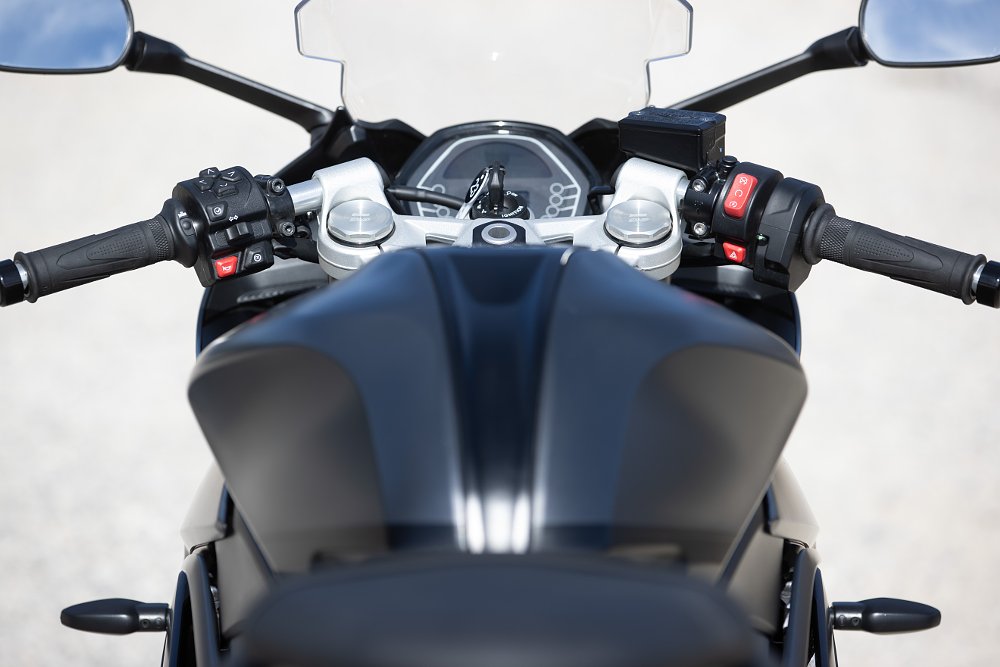
When compared against the Trident, the Daytona’s clip-on-style handlebars are positioned 4.3 inches lower and 3.7 inches further forward. Hinckley designers also rotated them downward by 13 degrees and toward the rider by 6 degrees. The pegs are relocated as well, 0.4 inches upward and 0.6 inches rearward. The resulting rider triangle is engaging yet relaxed, active yet neutral.
For this five-foot, 10-inch rider, discomfort never entered the equation. My wrists never ached. My knees never creaked. My back never stiffened. Your mileage may vary, however. A fellow journalist complained about the lowered handlebars halfway through the day. That’s not to send mixed messages but to illustrate how judging ergonomics can be a subjective exercise, especially when the riding position stops just short of aggressive.
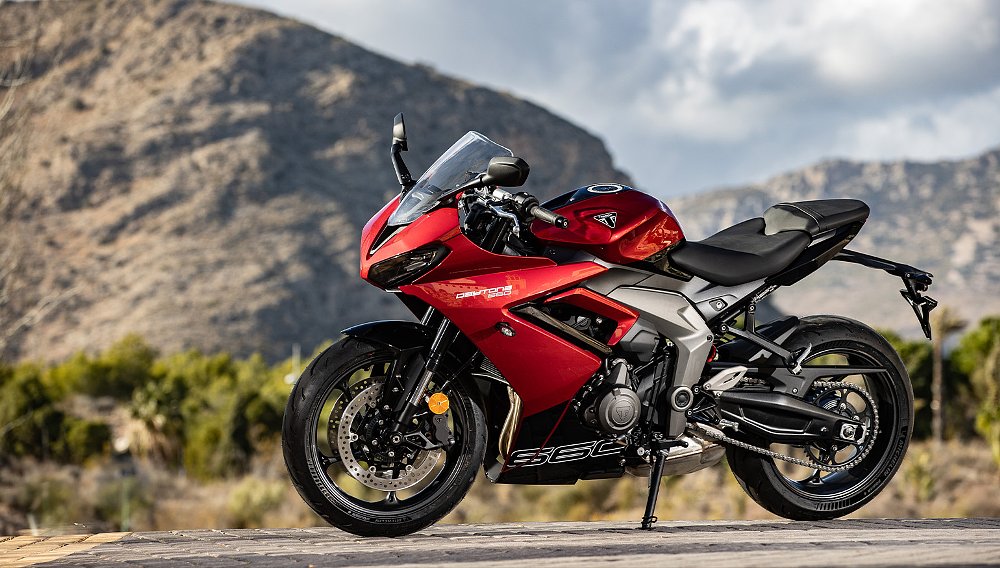
The Daytona’s electronics package was far less polarizing. After all, its basic rider aids strike the ideal balance for most middleweights. Three ride modes (Road, Rain, and Sport) suit common situations. Traction control offers two choices: on or off. Even my test unit’s optional heated grips included just three settings (low, medium, and high). Enough options to enhance the experience, but not enough to complicate it. That’s where the Daytona 660 excels, and that’s where it stands to make its mark.
Resolution
Triumph made a concerted effort to showcase the Daytona 660 as a pragmatic street bike — and for a good reason. Most Daytonas will log the majority of their miles off the track. To answer the question on everyone’s mind, no, the 660 isn’t the 675. Spoiler alert: It never will be. But, that doesn’t mean the 660 isn’t a Daytona. Triumph’s sport bike has assumed many identities over the decades. This is just its latest.
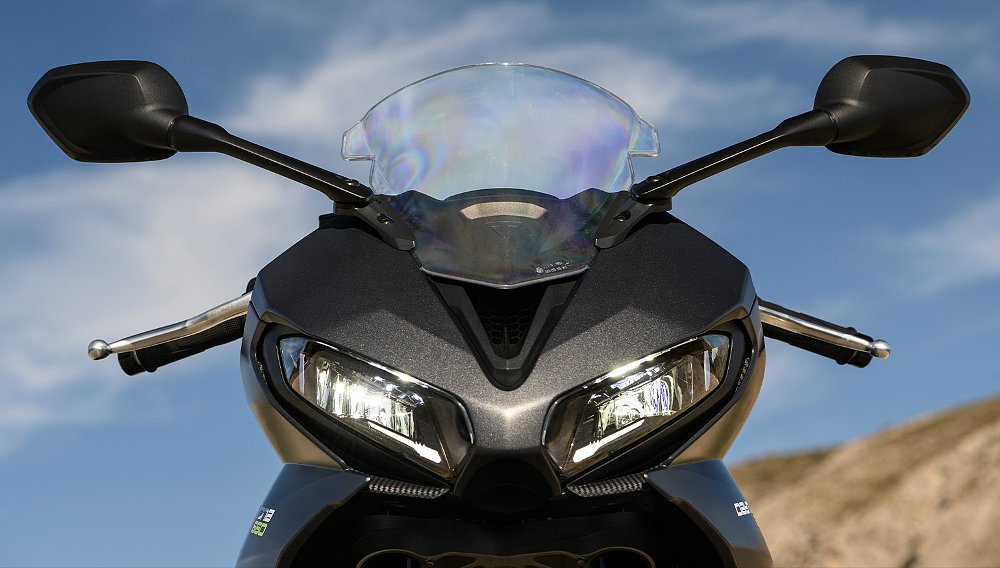
If the 660 were a film, it would be a popcorn movie, not high-brow Oscar bait. It’s fun, simple, and good for a few laughs, replete of all the painstaking mental work required by supersports of yore. But blockbusters often spawn spin-offs and team-ups. The Daytona 660 is no different. While Triumph offers track-aimed accessories like frame sliders and a quickshifter, a concerted racing effort is also in the works.
Triumph partnered with 13-time Isle of Man TT winner Peter Hickman to develop the Daytona 660 to enter Britain’s National Sportbike Championship. The resulting race kit will include a race-spec fairing, subframe, wiring loom, ECU, dash, rear-sets, and clip-ons, and Peter Hickman Racing (PHR) Performance will sell it as a set or a la carte. When those parts appear on the market, the model should gain some much-needed track cred.
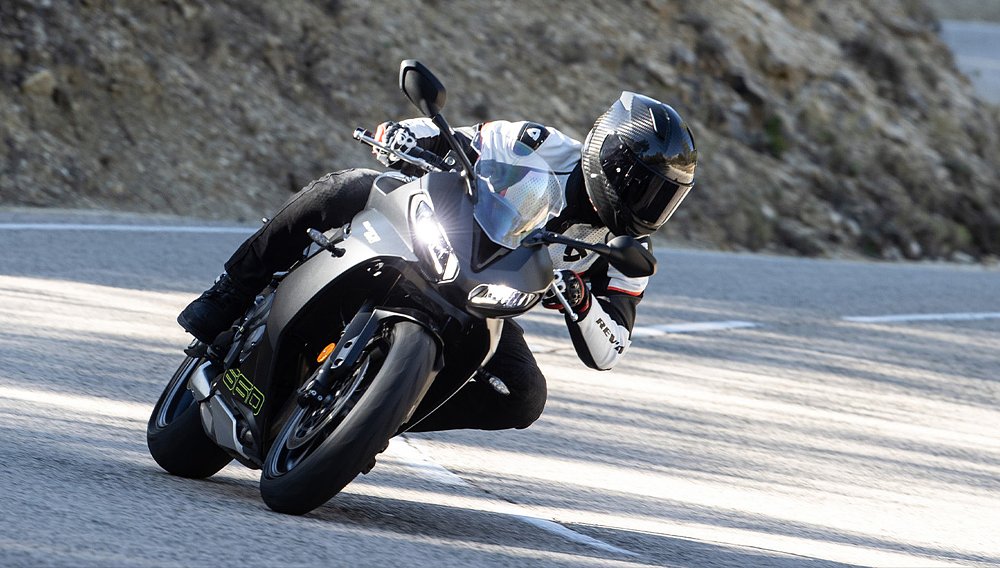
Even so, the 2025 Daytona 660 isn’t a direct sequel to the legendary Daytona 675. For many riders, including newer and younger ones, maybe that’s a better direction for the long-running franchise.
| 2024 Triumph Daytona 660 | |
|---|---|
| Price (MSRP) | $9,195 |
| Engine | 660 cc, liquid-cooled, 12-valve, inline triple |
|
Transmission, final drive |
Six-speed, chain |
| Claimed horsepower | 94 @ 11,250 rpm |
| Claimed torque | 50.9 foot-pounds @ 8,250 rpm |
| Frame | Tubular steel |
| Front suspension | Showa 41 mm fork; 4.33 inches of travel |
| Rear suspension | Showa shock, adjustable for preload; 5.12 inches of travel |
| Front brake | Dual four-piston calipers, 310 mm discs with ABS |
| Rear brake | Single-piston caliper, 220 mm disc with ABS |
| Rake, trail | 23.8 degrees, 3.24 inches |
| Wheelbase | 56.12 inches |
| Seat height | 31.9 inches |
| Fuel capacity | 3.7 gallons |
| Tires | Michelin Power 6, 120/70ZR17 front, 180/55ZR17 rear |
| Claimed weight | 443 pounds |
| Available | April 2024 |
| Warranty | 24 months |
| More info | triumphmotorcycles.com |

















